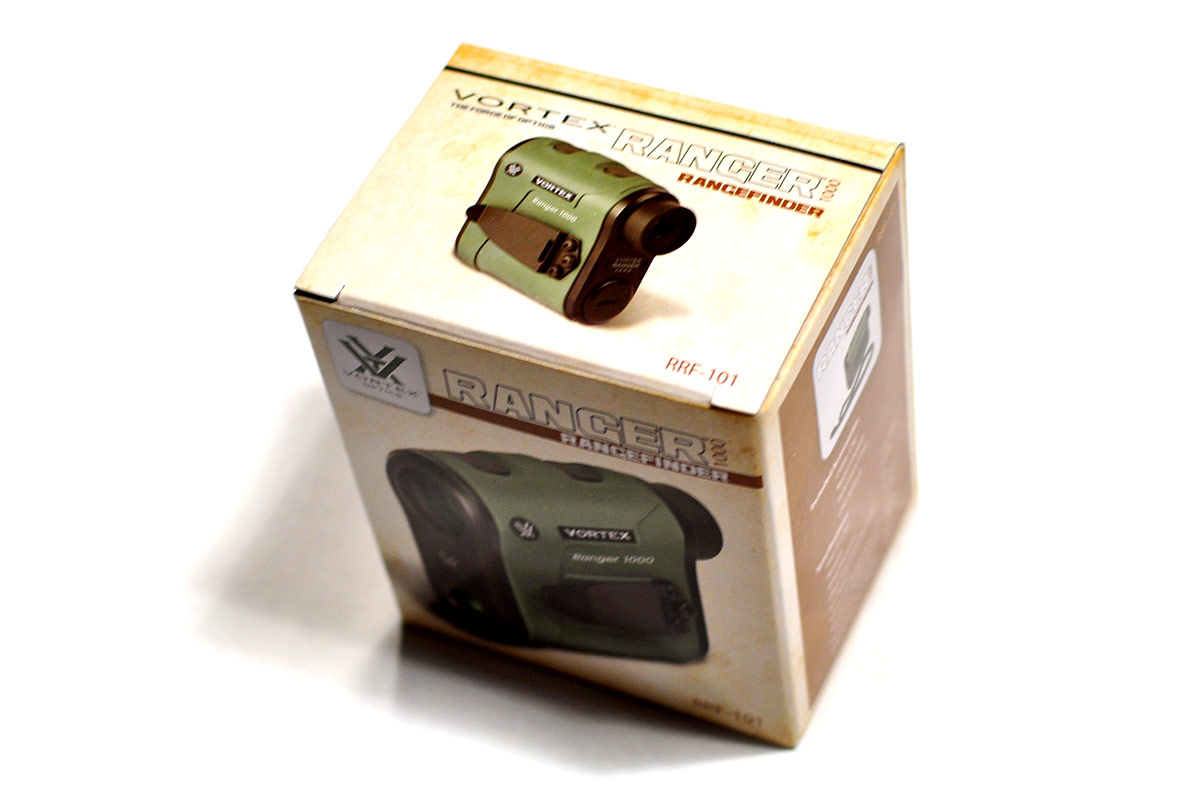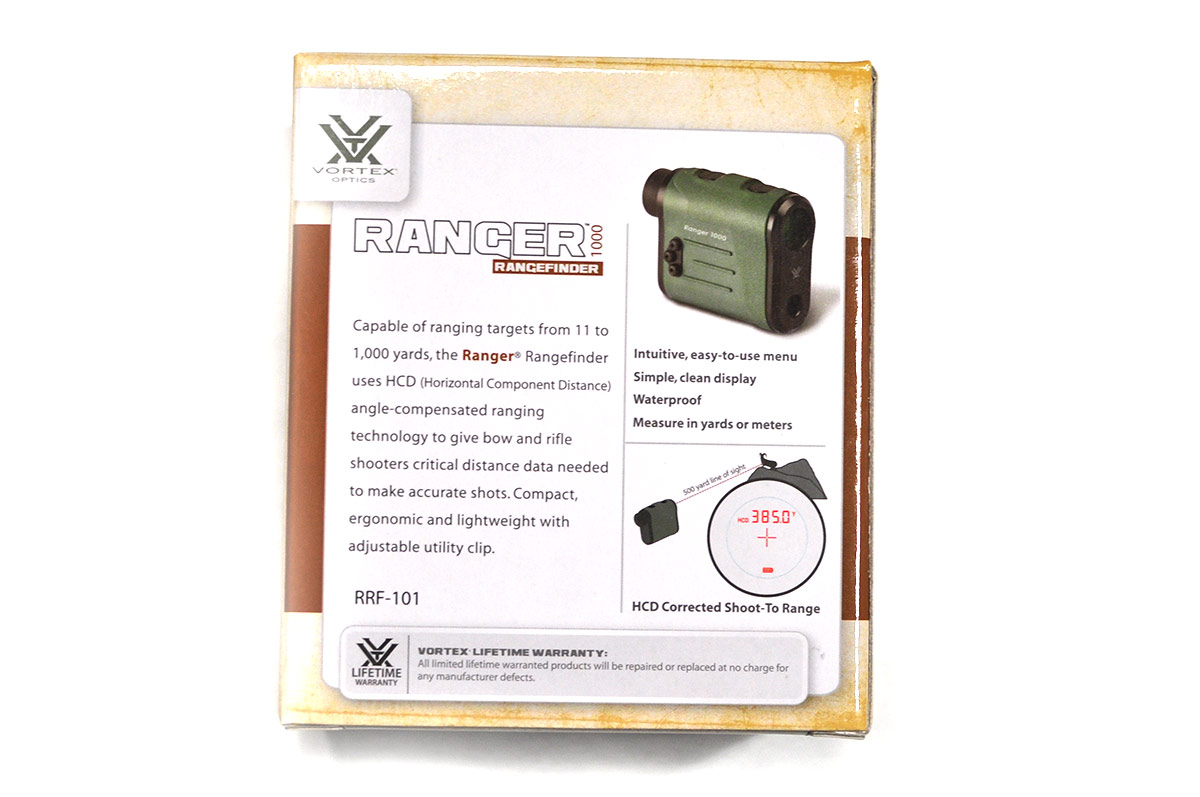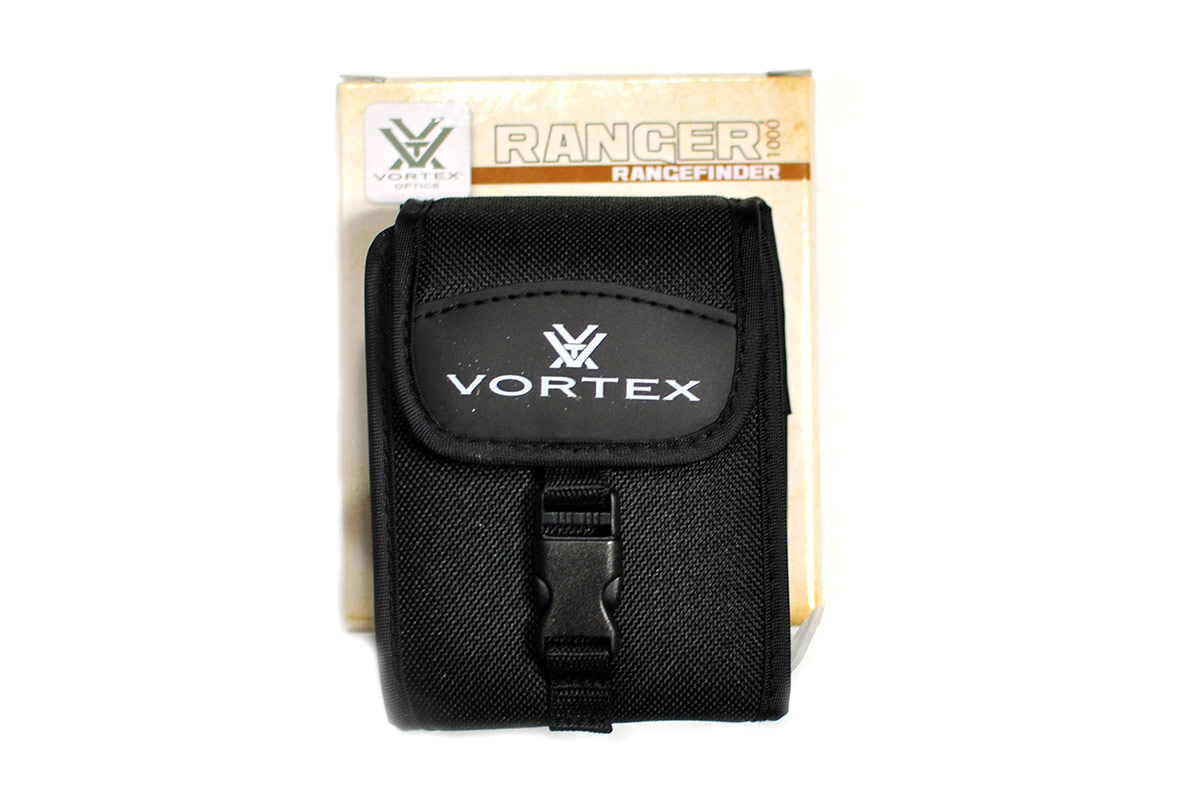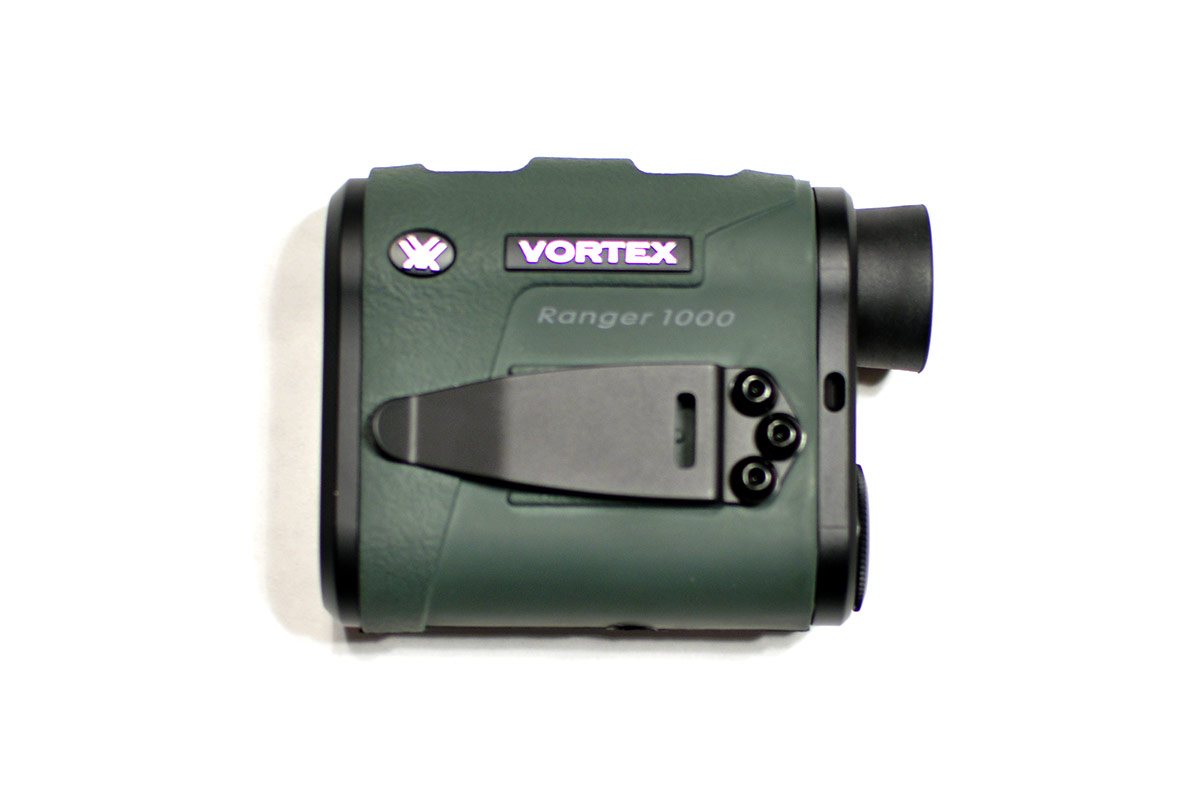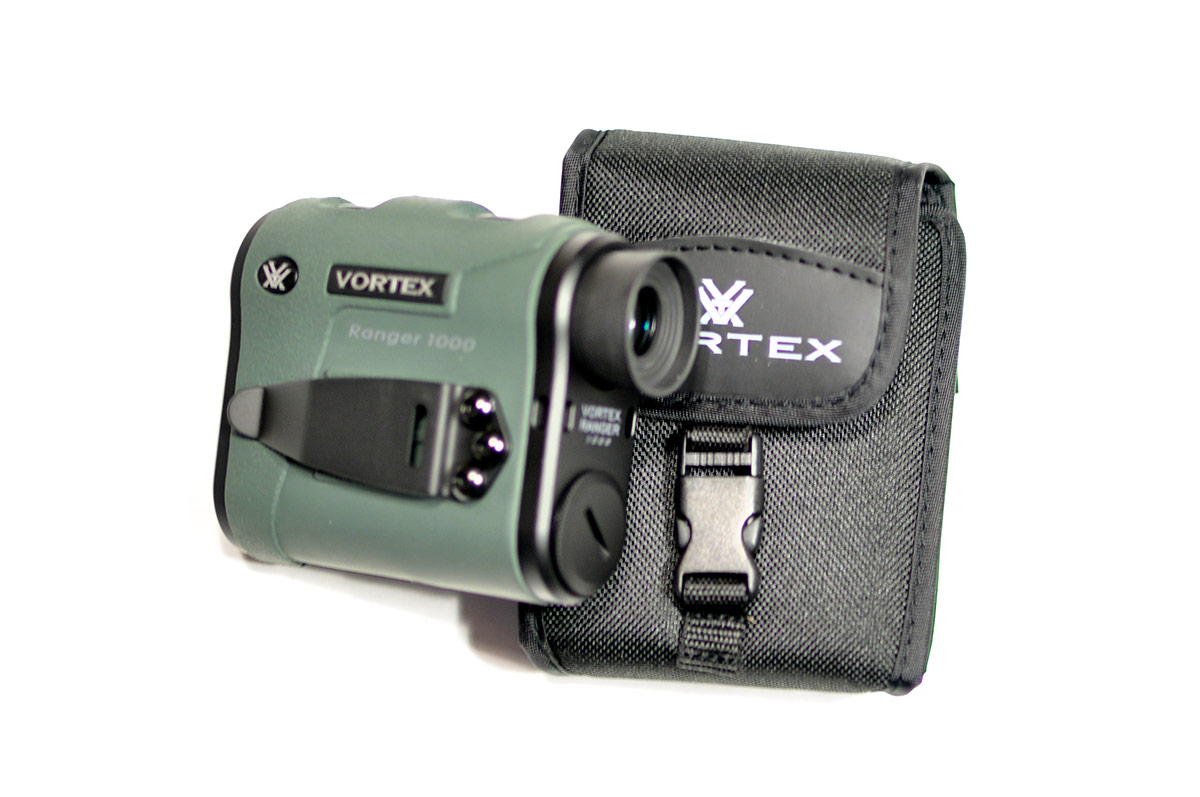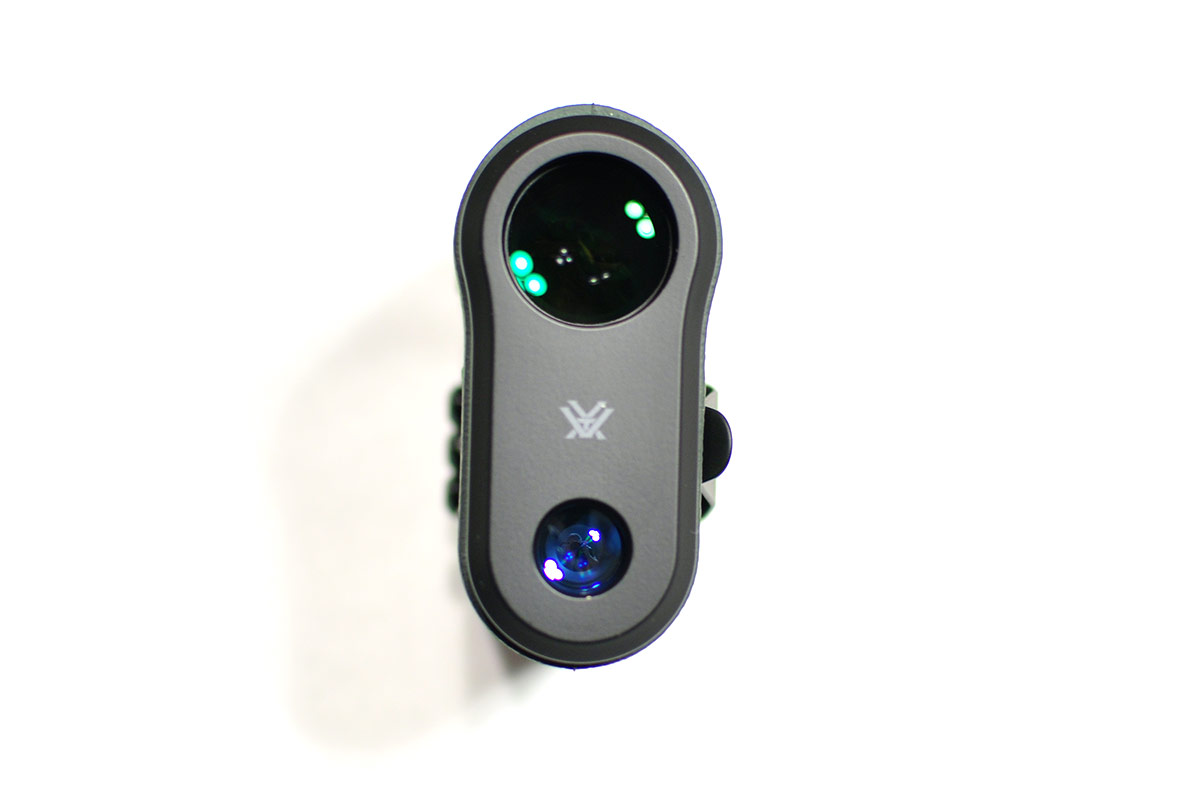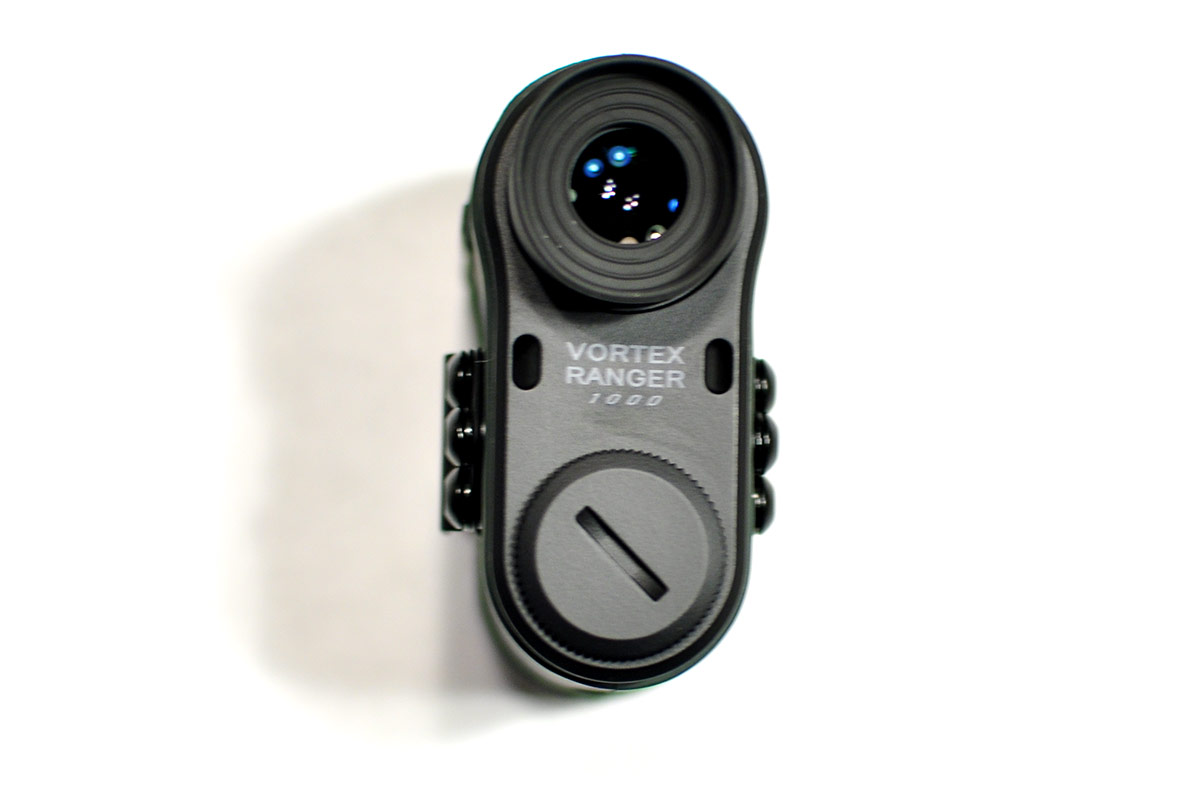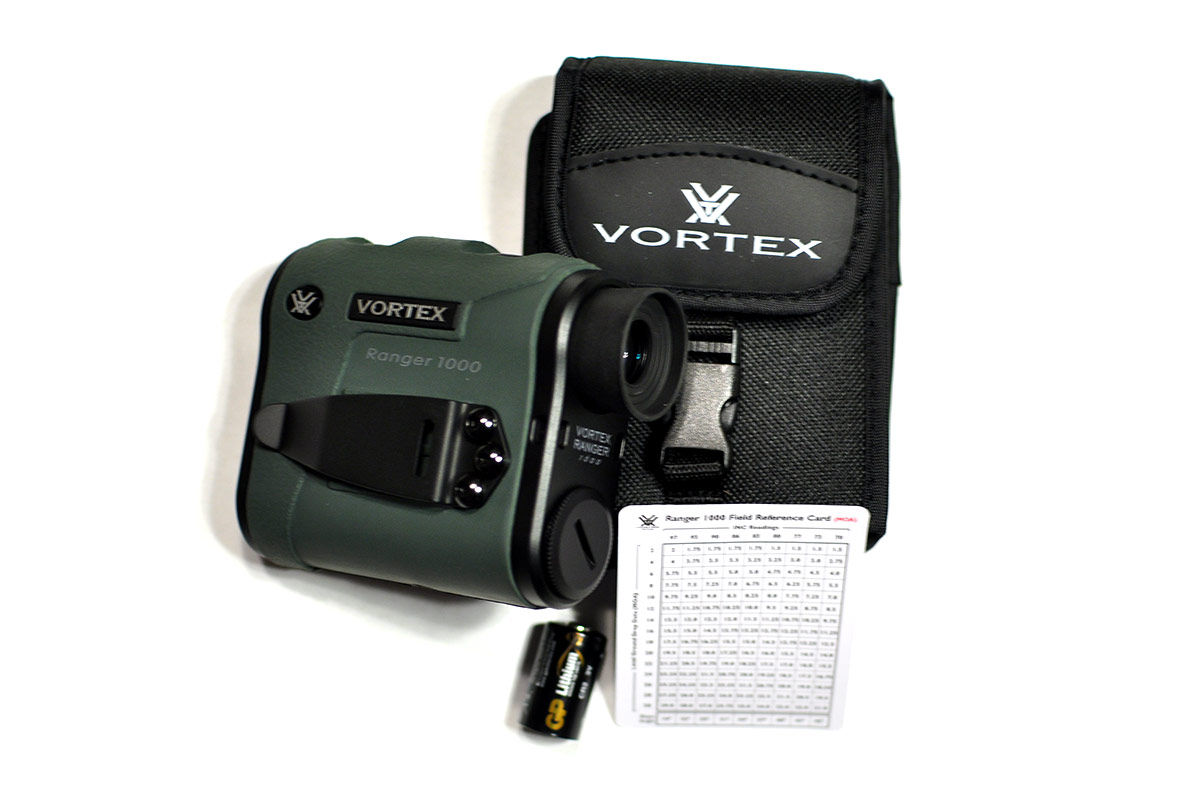I recently got my hands on a Ranger 1000 Rangefinder by Vortex Optics. I’ve played with these in the store and used similar range finders that friends have owned, but out of all of the rangefinders I’ve used, I keep going back to the Ranger 1000. The ergonomics are great, it’s very compact and light, and it’s accurate.
The ergonomics of the Ranger 1000 are great, and it allows for easy one handed operation, something that is great if you are also carrying a rifle when out hunting, etc. Along with the great ergonomics, the Ranger 1000 is also fully o-ring sealed, so it’s very water resistant.
Included with the rangefinder is a nice carrying case that will attach to a 2″ or smaller belt. The case has elastic on the sides, it pinches the rangefinder, so even if you forget to clip it closed, it’ll take some serious moving around for it to fall out of the case. It also has a belt clip directly on the side of the rangefinder, so you can simply clip it to your belt; the clip can be moved to either side of the range finder. Also included in the box is a lanyard, a field reference card and the required CR2 3v battery.
With everything in the case, the battery in the rangefinder and the lanyard attached, the whole package weighs in at 9oz and measures 3.5 in x 4.25 in x 2 in (L x W x D). So a pretty small and light weight package.
There are two modes of operation for the Ranger, Horizontal Component Distance (HCD) and Line of Sight (LOS). The HCD mode is the primary mode of operation. This mode displays the critical horizontal distance to the target (basically factoring the angle of the shot). This mode is best to be used when you are not using a ballistic calculator that factors in drop data, etc. So if you have level ground shot data (like when you probably zeroed your rifle), then this mode calculates the drop range for you, so you would simply use your standard ballistic drop tables, no additional drop calculations are needed. If you are using a ballistics computer that takes angle of shot into account, then you will want to use the LOS mode.
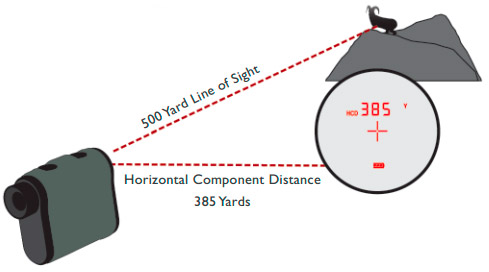
As far as “features” go, the rangefinder allows you to switch between meters (m) and yards (yds) for the distance display and has 3 brightness settings for the red digital display. The display also has a battery level indicator, so you know when you need to get a new CR2 battery. Other than that, there really aren’t any over the top extra features. It does it’s job, and does it well.
The eyepiece (eyecup) acts as a focus ring. My only complaint about the rangefinder is this… The eyepiece is a little tough to get a hold of and tun. You end up crushing in the rubber cup, there is not a lot of material to grab onto and with gloves on, it makes it rather difficult to adjust.
As far as normal use goes, the operation is very simple, you press and release the Measure button to turn on the rangefinder, then take aim and press and release the Measure button again to take a range reading. You can also press and hold the Measure button to scan and take distance measurements. The operation can seem a little “laggy” at times; basically I’ve noticed that sometimes I have to tap the measure button a time or two to get it to take a measurement. But that could also be something to do with the object I’m trying to measure the distance of.
To enter the settings, you hold the Menu button down for 4 seconds. This enters the setup mode where you can change the mode, distance measurements and brightness. You use the Menu button to cycle through the settings, and the Measure button to cycle through the setting options. Once you are done, you simply hold the Menu button again for 4 seconds and the settings will be saved.
For actual use, I’ve tried measuring targets out to about 700m using various things like rocks, trees, sides of hills, steel targets, paper targets, and street signs. Things like bushes, sides of hills, or the leaves of trees don’t seem to work so well. But that is to be expected. Sides of hills generally like to have a flatter surface to target, like a rock. So just hitting the dirt on a hill doesn’t seem to always work for me. That being said, I haven’t been stuck not being able to measure the distance to anything.
For more information on the operation of the rangefinder, you can check out the full manual. The product specs from Vortex are also listed below.
Bottom line, if you are in the market for a rangefinder, the Ranger 1000 from Vortex Optics is a great and reasonably priced choice. You get a great quality product with a lifetime warranty that will work for almost any hunting or shooting situation.
Specifications (from vortexoptics.com)
| Range – Reflective | 11-1000 yards |
|---|---|
| Range – Deer | 11-500 yards |
| Accuracy | + / – 3 yards @ 1000 yards |
| Max Angle Reading | +/- 60 degrees (INC 50) |
| Magnification | 6 x |
| Objective Lens Diameter | 22 mm |
| Linear Field of View | 315 feet/1000 yards |
| Angular Field of View | 6 degrees |
| Eye Relief | 17 mm |
| Length | 3.9 inches |
| Width | 3 inches |
| Weight | 7.7 ounces |
